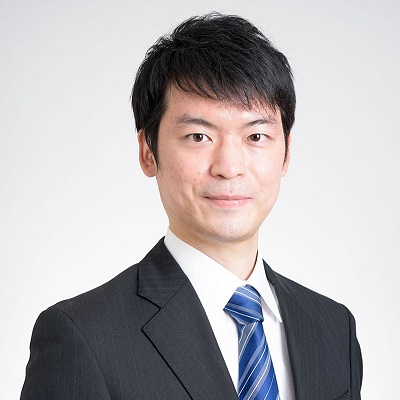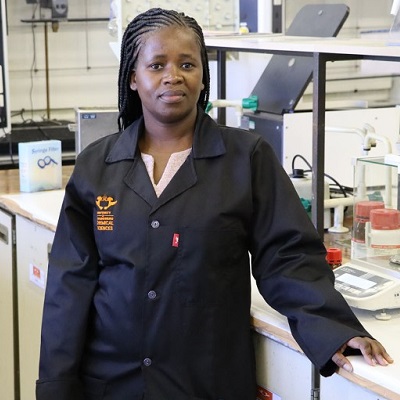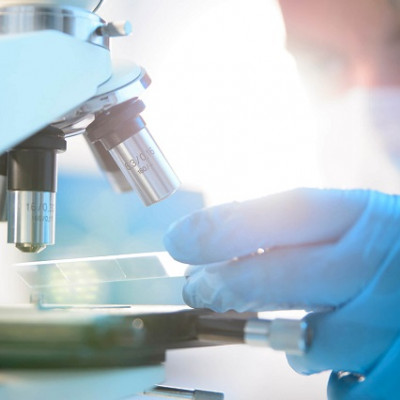Zakaria Y. Al Balushi: Material builder

Zakaria Al Balushi and his team are devising ways to produce next-generation nanomaterials at the University of California, Berkeley. One approach is using laser light in the hierarchical assembly of crystalline semiconductor materials, such as silicon and germanium, from liquid metals. Heat generated by the laser is used to direct the flow of liquid materials to form structured semiconductors.
“It’s about approaching synthesis in an unorthodox manner,” says Al Balushi, a materials scientist, who in January won a US$600,000 US National Science Foundation Faculty Early Career Development grant, awarded to 500 early-career researchers in the United States each year. He intends to use his grant to develop a process, also with light, to improve the manufacturing of 2D semiconductors for high-speed, energy-efficient microelectronics. Al Balushi says one of his “largest contributions to science so far” was as a PhD student in 2015, when he developed a method to advance a key semiconductor material used in light-emitting diodes — a semiconductor light source used in television displays and other technologies.
He recalls working alone in a lab at Pennsylvania State University in University Park around Christmas Eve, and, after many attempts, managing to grow a 2D layer of gallium nitride at the interface between graphene and a silicon carbide substrate. His synthesis technique increased the bandgap of the material to operate in the deep-ultraviolet, boosting its potential to be used in devices such as deep-ultraviolet light sources and in next-generation high-frequency circuits.
Ultimately, Al Balushi wants to create semiconducting materials that can be synthesized one atomic layer at a time. Through this work, he hopes to uncover new physical properties and explore quantum states, which relate to particles and energy at an atomic scale. “This area of chemical synthesis is still in its infancy,” he says. — by Gemma Conroy
Kazuhiro Morimoto: Fast framer

Kazuhiro Morimoto is developing imaging technologies that can capture ultrafast phenomena by counting and detecting individual photons.
With colleagues at the Swiss Federal Institute of Technology Lausanne (EPFL) and Canon in Kanagawa, Japan, Morimoto has developed a high-speed megapixel camera called MegaX, which reconstructs 3D scenes that are accurate to within a few millimetres. MegaX can record images at a rate of 24,000 frames per second and has a shutter speed of 3.8 nanoseconds (roughly four-billionths of a second)2. This high-speed capability makes MegaX useful for technologies that require fast and precise imaging, such as driverless vehicles, virtual and augmented reality, and navigation systems, says Morimoto.
MegaX uses micrometre-scale image sensors called single-photon avalanche diodes (SPADs), which detect single photons and convert them into electrical signals that are translated into digital information. SPADs are coupled to a pixel circuit consisting of hundreds of nano-sized transistors for signal processing.
Morimoto joined Canon in 2013 as a device engineer. Four years later, he moved to Switzerland for his PhD at EPFL’s Advanced Quantum Architecture Laboratory, where he worked with electrical engineer Edoardo Charbon to improve the spatial resolution of SPAD sensors. Charbon’s foresight about the technology’s real-world potential fuelled Morimoto’s drive as a PhD student. “Imagining the future is an important motivation for researchers to accomplish something new,” says Morimoto. His PhD was supported by Canon, which allows employees to conduct academic research for 2.5 years.
In 2021, Morimoto and his colleagues at EPFL used MegaX to capture a laser pulse reflecting off a series of mirrors. They describe the results as the first observation of a pulse of light moving in three dimensions3.
Morimoto returned to Japan in 2019 as lead device engineer at Canon. In the Nature Index, which tracks article authorship in 82 selected natural-sciences journals, Japan is the fifth-ranked nation for nanoscience and nanotechnology-related output, with a Share (the Index’s signature metric) of 420.30. The country was responsible for 3.7% of global Share in the field in 2021. China, which leads in nano-related output with a Share of 4,521.61, contributed 39.9%.
Morimoto says the opportunity to collaborate with researchers from different areas, such as software development, optics and electrical and mechanical engineering, motivated him to pursue his work in an industry setting.
“The combination of diverse knowledge and ideas often leads to disruptive innovation,” he says. — by Gemma Conroy
Philiswa Nomngongo: Clear goal

The inspiration for Philiswa Nomngongo’s research career can be traced back to her childhood in rural South Africa. She and her mother would wake at 2 a.m. every day to collect drinking water from a nearby river. “I asked my mother why we woke up so early, and she explained that it was because the water is clear at that time,” she recalls. “By 7 a.m., the cows and goats are going to the water and making it dirty. It got me thinking about what makes water safe to drink.”
Nomngongo, an analytical chemist at the University of Johannesburg, South Africa, says innovations in nanotechnology are key to ensuring that effective water-quality monitoring and filtering solutions are available to remote and rural communities. “Nanotechnology is a promising field when you couple it with analytical chemistry, because it allows flexibility and specificity,” she says.
Nano-filters can be designed to capture and remove just about any pollutant in water, says Nomngongo, which is important, because the characteristics of water pollution differ from cities to the countryside. Pharmaceutical pollution poses a significant challenge to urban South Africa, for example, whereas supplies in rural areas are tainted by agricultural runoff.
Nomngongo and her colleagues have been investigating how the chemistry and thermodynamics of mesoporous (full of holes) nanoparticles of iron oxide could be used to adsorb levofloxacin, a broad-spectrum antibiotic, that has leaked into waterways4. The drug is toxic for ecologically important aquatic species such as algae, and researchers have also raised concerns over its effects on human health. The iron oxide nanoparticles were shown to be reusable and efficient, potentially with a longer shelf life compared with other adsorbents that are not reusable.
The cost of such technologies can be a major obstacle in bringing the devices to market, says Nomngongo, who wants to ensure that South Africa and other developing economies can afford to deploy her research. She is now searching for cheaper ways to manufacture nanomaterials, such as by recycling waste materials. “We’re looking at converting plastic into carbon, which is very good at adsorbing organic [chemicals], and silica from the by-products of coal combustion,” she says.
In 2021, Nomngongo was appointed the South African Research Chair in Nanotechnology for Water by the country’s Department of Science and Innovation-National Research Foundation. The role has a remit of building South Africa’s talent pool in nanotechnology to help address future concerns in water security.
“The aim is to train emerging researchers and students in the field,” she says. — by Benjamin Plackett
Sabina Caneva: Protein prints

Protein fingerprinting, a technique that identifies specific proteins by decoding the order of their amino acids, has the potential to be as transformative as DNA sequencing, says Sabina Caneva, a nanoscientist at Delft University of Technology in the Netherlands.
Proteins not only serve as markers of many conditions, such as diabetes and autoimmune disorders, but could also form the basis of treatments for cancer and other diseases. And because protein fingerprinting can detect worrying shifts in protein structures, it could also change approaches to diagnosis, says Caneva. “You could say if someone was going to develop a disease before they do,” she says.
For all its promise, protein fingerprinting is time-consuming, and current methods lack specificity. Caneva hopes to develop a solution using nanopore technology, which harnesses pore-forming proteins that can more precisely scan the make-up of unidentified proteins. The technique involves unfurling a target protein and passing it through the pore, which picks up on molecular tags, such as dyes, that are attached to specific amino acids in the protein.
Researchers are investigating the potential of nanopores to improve protein-sequencing methods, including those that aim to identify rare proteins within a sample. Caneva intends to continue this work with colleagues at her institution, supported by a five-year €1.5-million (US$1.66-million) grant awarded by the European Research Council in January.
Caneva says she knows how to build the nanopores; her next challenge is to find a way to coax the proteins towards them. Rather than relying on passive diffusion, which is slow, she plans on using sound waves to guide the proteins to their target. Given that the wave lengths are bigger than the proteins, she’s figuring out how to attach larger beads to the proteins, which are more likely to be caught by the sound waves.
“We’ll play around, changing the sound notes to see if we can move the proteins with the beads attached,” says Caneva. “We’ll start on a single pore, but ultimately, we’re trying to do this on a large scale.” — by Benjamin Plackett
Read the original article on Nature.
